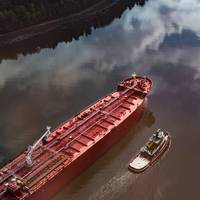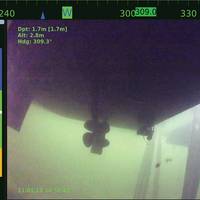Propulsion Decisions or Smoke on The Water?

In no uncertain terms, the goal of “future capable” ship’s propulsion is confusing. We have been pressed into a regulatory environment that asks us to reduce emissions, and in the same breath deliver power sufficient to meet commercial schedules and allow the vessel to weather a storm and be safe at sea. To reach that end, owners are presented with a basket of new alternative fuels to achieve the latest January 1, 2023 Carbon Intensity Indicator (CII) regulations. Add that most operators have no previous historical experience or data with these alternative fuels…
ZF Promotes Orvieto

ZF Marine Propulsion Systems Miramar, LLC announced that Drew Orvieto has been promoted to the position of Senior Manager, Commercial Fast Craft and Engineering – North America. Orvieto, a 4+ year member of the ZF team first worked with the company as an intern in 2011.Orvieto returned to ZF in 2015 after completing a Master’s degree in engineering, followed by a period as a naval architect at a large American boat builder. Upon his return to ZF, Orvieto took a position as naval architect…
The Future: Autonomous Robotic Hull Grooming

Ship hull biofouling has significant impacts on fleet readiness, ship performance, cost, and the environment. Biofouling results in increased hydrodynamic drag which results in greater fuel use and greater emissions per distance traveled than a hydraulically-smooth hull. A study by Schultz, et al. found the typical fouling rating (FR) of a US Navy DDG-51 class vessel, FR-30, increases fuel consumption by 10.3% over a hydraulically-smooth DDG-51. Results showed that reducing this…
U.S. Navy: The Business Case for a Titanium Ship

Participants at a workshop exploring the use of titanium structure for ships found that it is not only possible to construct a ship hull from titanium—or Ti, it could be cost effective. The workshop was sponsored by the Office of Naval Research and hosted by the University of New Orleans, where an ONR research program on titanium ship structures is being conducted. Representatives of the shipbuilding industry, titanium suppliers, Navy, Coast Guard and Air Force labs, and academia discussed and examined materials, processes and applications. Most ships today are primarily made from steel.
Hydrex Awarded for LIFE Project
During a conference held at the European Parliament in Brussels, Hydrex was presented an award for the ECOTEC-STC project which was named as one of the best LIFE projects completed in 2010. To select the best LIFE-Environment projects, a lengthy identification and evaluation process was followed, based on a set of best practice criteria. These were developed by EU Member States in collaboration with the European Commission. The objective was to help improve the dissemination of LIFE project results by clearly identifying those projects which could have the most positive impact on the environment if widely applied. Over a 3.5 year period…
New Sher-Release Coating System
Sherwin-Williams Protective and Marine Coatings announced new Sher-Release Silicone Fouling Release Coating System, a nontoxic alternative to conventional antifouling coatings. A U.S. Navy patented solution, Sher-Release combines durability, longevity, clean-ability and cost-effectiveness. It is an ideal coating for hull applications to a range of ships, helping to prevent fouling of the underwater hull by barnacles, mussels and other marine organisms. The system’s foulant release technology combines an epoxy anti-corrosive system and a tough, protective silicone surface coat interlocked by a unique elastomeric formula. The Sher-Release system’s surface provides steady long-term performance that is less prone to mechanical damages.






